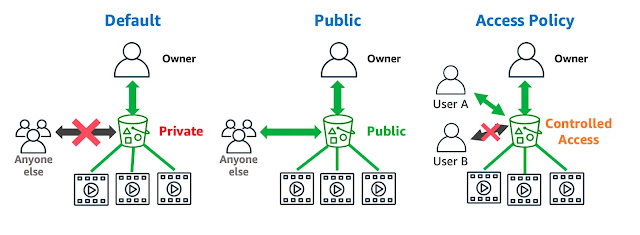Amazon Simple Storage Service (S3)
Amazon S3 is a scalable, high-speed, web-based cloud storage service. The service is designed for online backup and archiving of data and applications on Amazon Web Services(AWS). Data can be transferred to S3 over the public internet via access to S3 application programming interface.
Amazon S3 is an Object Storage service, which differs from other types of cloud computing storage types, such as blocks and file storage. Each object is stored as a file with its metadata included. The object is also given an ID number. Applications use this ID number to access object. The S3 object storage cloud service gives a subscriber access to the same systems that Amazon uses to run its own websites. S3 enables customers to upload, store and download practically any file or object that is up to 5 terabytes (TB) in size- with the largest single upload capped at 5 gigabytes (GB). Common use cases for S3 include the following;
ü Data storage
ü Data archiving
ü Application deployment, installation and management of web apps;
ü Software delivery
ü Data backup
ü Disaster recovery
ü Data lakes
ü Mobile applications
ü Internet of Things (IoT)
ü Media hosting for images, videos and music files
ü Website hosting
v Various types of Storage:
v S3 Lifecycle:
v S3 object Storage and Buckets:
S3 object storage service offering industry leading scalability, data availability, security, and performance.
S3 bucket is a public cloud storage resource available in Amazon Web Services (AWS). Amazon S3 buckets, which are similar to file folders, store objects, which consists of data and its descriptive metadata.
v Security on Buckets:
S3 is the only object storage service that allows you to block public access to all of your objects at the bucket or the account level with S3 block public access. Lack of visibility into which data is being stored inside S3 buckets and whether the protections in place for that data are sufficient. Configuration problems that allow malicious actors to upload malware into S3 buckets, potentially creating a beachhead that they can use to launch further attacks.
Everything in Amazon S3 is private by default. This means that all S3 resources, such as buckets, folders, and objects can only be viewed by the user or AWS account that created that resource. Amazon S3 resources are all private and protected to begin with.
If you decide that you want everyone on the internet to see your car photos, you can choose to make your buckets, folders, and objects public. Keep in mind that a public resource means that everyone on the internet can see it.
Most of the time, you don’t want your permissions to be all or nothing. Typically, you want to be more granular about the way you provide access to your resources.








0 Comments